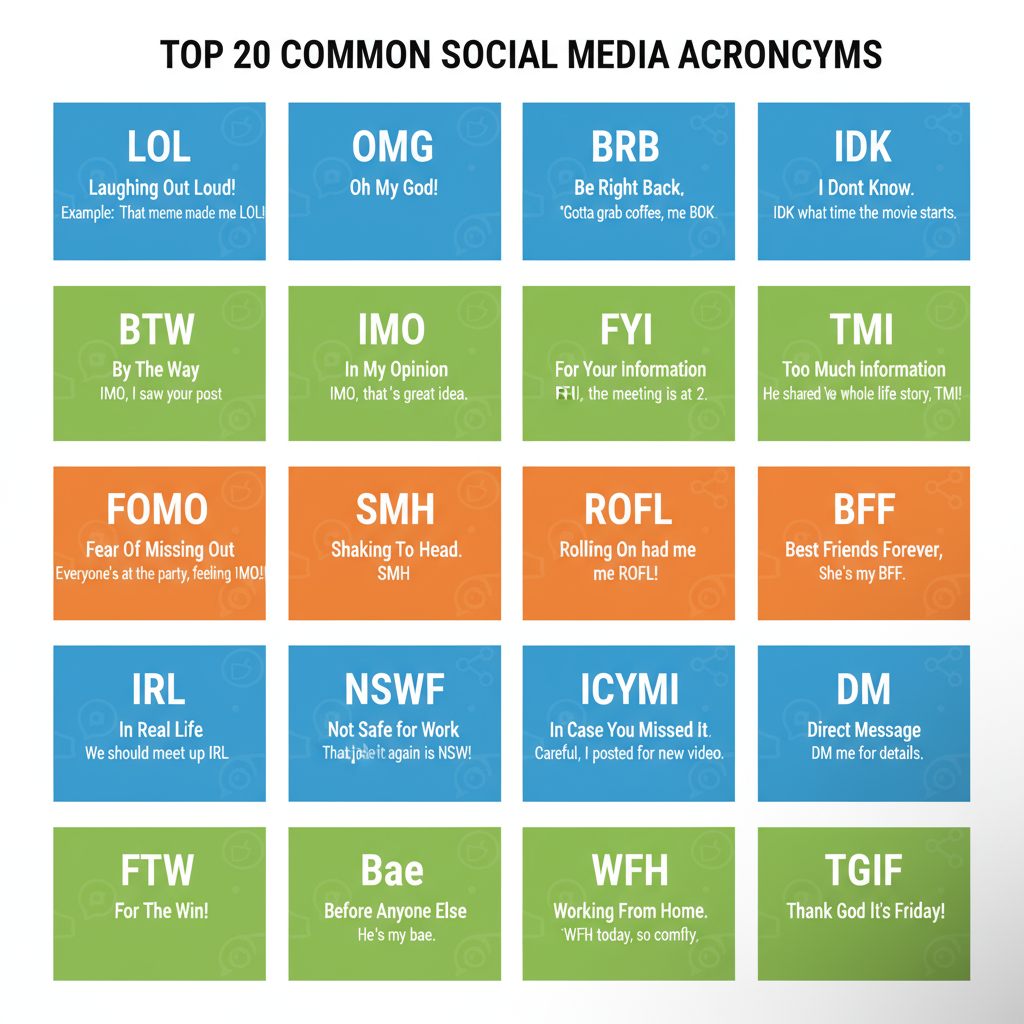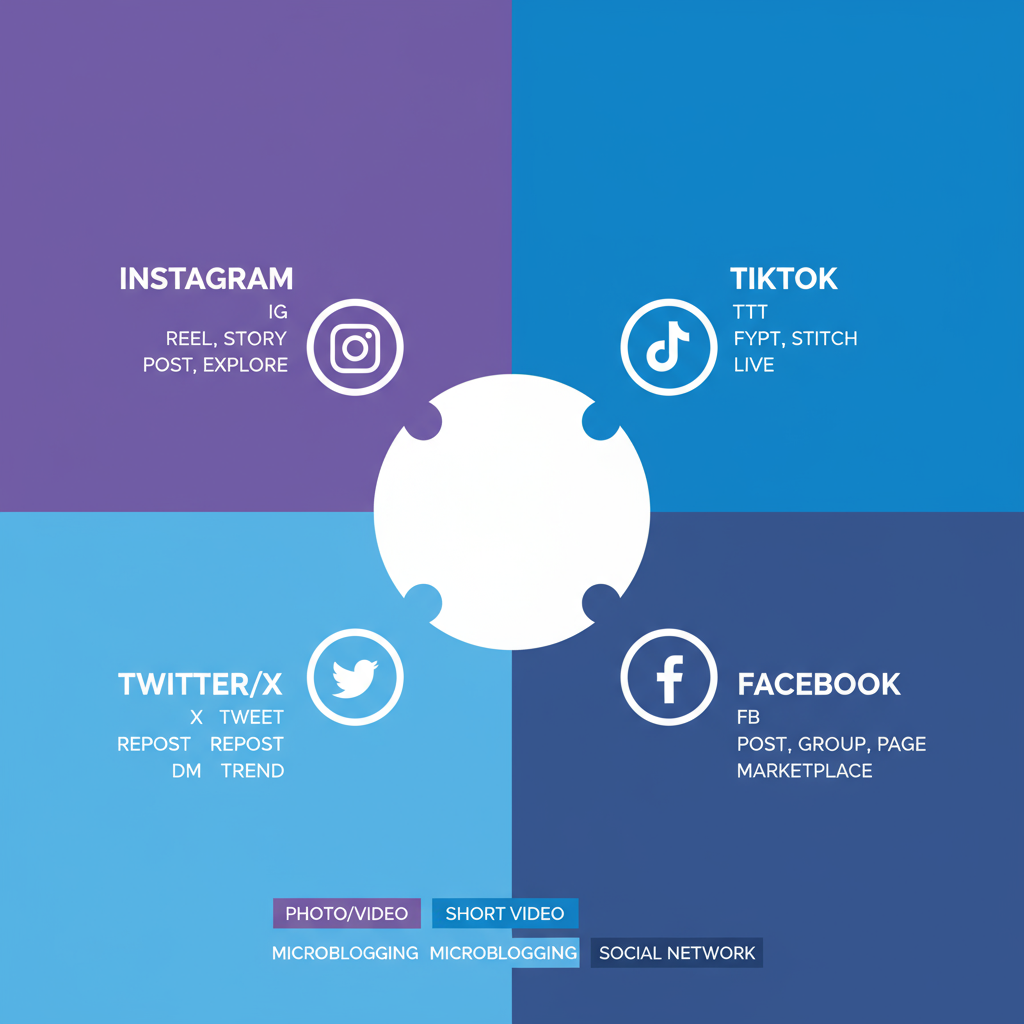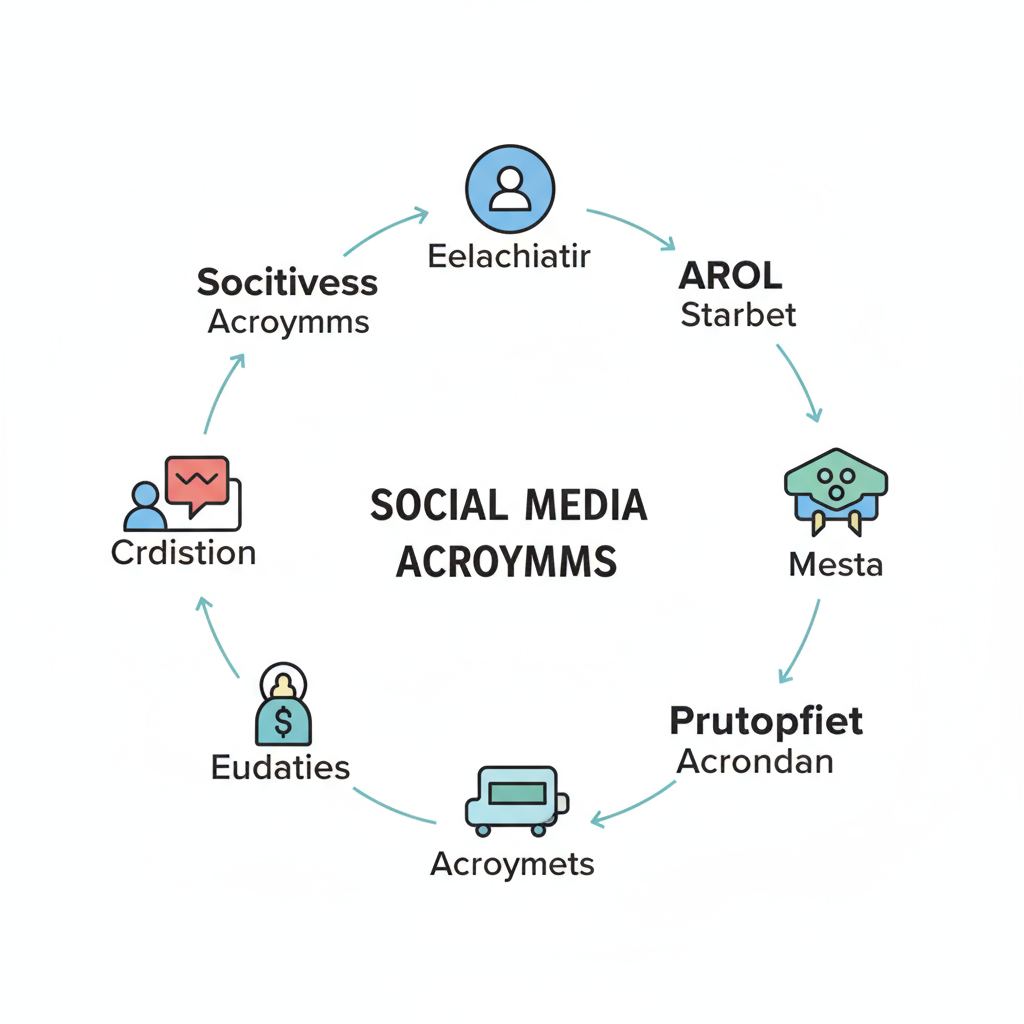Social Media Acronym Meanings and Usage Guide
Learn the meanings and uses of common social media acronyms across platforms to boost communication, engagement, and online marketing impact.

Introduction to Social Media Acronyms and Their Importance
In the ever-evolving world of digital communication, social media acronyms play a vital role in shaping how users interact and engage online. Across platforms like Instagram, Twitter/X, TikTok, Facebook, and LinkedIn, abbreviations such as DM, ROI, and FYP condense more complex ideas into concise, recognizable phrases. For marketers, influencers, and everyday users alike, these acronyms enhance efficiency, reinforce community identity, and increase relevance in conversations.

Understanding these shortcuts is more than just a matter of convenience — it’s a necessary language skill for online fluency. Used correctly, acronyms can boost engagement, convey tone, and strengthen brand identity. Without context, however, they may cause confusion or harm credibility.
---
What Are Social Media Acronyms?
Social media acronyms are reduced forms of longer phrases, often derived from internet slang, marketing terminology, or platform-specific features. Common examples include:
- DM: Direct Message
- ROI: Return on Investment
- FYP: For You Page (on TikTok)
- IMO: In My Opinion
These may be initialisms (spelled out letter by letter) or acronyms (pronounced as words). While they accelerate communication, they can also act as digital “gatekeepers” — those fluent in this shorthand are often seen as more engaged or “in the know.”
---
Top 20 Common Social Media Acronyms and Their Meanings
Below is a reference guide to widely used acronyms across different social media platforms.
| Acronym | Meaning | Common Platform(s) |
|---|---|---|
| DM | Direct Message | Instagram, Twitter/X, Facebook |
| ROI | Return on Investment | LinkedIn, Facebook, Instagram Ads |
| FYP | For You Page | TikTok |
| IMO | In My Opinion | All platforms |
| LOL | Laugh Out Loud | All platforms |
| CTA | Call to Action | Marketing posts |
| UGC | User-Generated Content | Instagram, TikTok |
| TBT | Throwback Thursday | |
| FWIW | For What It’s Worth | Twitter/X, Facebook |
| ICYMI | In Case You Missed It | Twitter/X |
| SMH | Shaking My Head | All platforms |
| BTS | Behind the Scenes | YouTube, Instagram |
| SMM | Social Media Marketing | LinkedIn, marketing blogs |
| SEO | Search Engine Optimization | LinkedIn, blogs |
| AMA | Ask Me Anything | Reddit, Instagram Stories |
| MFW | My Face When | Memes, Twitter/X |
| NSFW | Not Safe For Work | Twitter/X, Reddit |
| BRB | Be Right Back | Messaging apps, all platforms |
| TL;DR | Too Long; Didn’t Read | Blogs, Twitter/X |
| OOTD | Outfit of the Day | Instagram, TikTok |
---
Platform-Specific Acronyms
- TBT (Throwback Thursday): Nostalgic photo posts
- OOTD (Outfit of the Day): Fashion-focused content
- IGTV (Instagram TV): Long-form video feature
TikTok
- FYP (For You Page): Content recommendation feed
- POV (Point of View): Narrative perspective in videos
- DC (Dance Challenge): Viral challenge clips

Twitter/X
- ICYMI (In Case You Missed It): Recap tweets
- RT (Retweet): Sharing another user’s tweet
- SMH (Shaking My Head): Expressing disbelief
- CTA (Call to Action): Encouraging user engagement
- FB Live (Facebook Live): Real-time streaming
- IMO (In My Opinion): Discussion prompts
- ROI (Return on Investment): Marketing performance indicator
- B2B (Business to Business): Audience targeting context
- SMM (Social Media Marketing): Core industry reference
---
How Acronyms Influence Digital Culture, Tone, and Engagement
Social media acronyms connect brands and individuals through shared linguistic codes. They contribute to faster interactions while communicating tone:
- Casual slang acronyms (LOL, BRB) suggest informality and approachability.
- Professional terms (ROI, SEO) convey expertise and authority.
Cultural impact: Many acronyms become trends or memes. FYP, for instance, is more than a TikTok feed — it’s a symbol of viral content success.
---
Advantages of Using Acronyms Online
- Time Efficiency: Streamlined communication
- Space Savings: Essential for limited-character platforms
- Familiarity Factor: Builds user rapport
- Brand Voice Alignment: Matches audience tone preference
- Trend Awareness: Demonstrates cultural relevance
---
Risks of Misusing Acronyms
- Audience Confusion: Unfamiliar terms can alienate followers
- Professional Missteps: Using casual slang in formal contexts may harm perception
- Cultural Variations: Meanings differ geographically
- Misinterpretation Potential: Certain acronyms have sensitive implications
---
Staying Current with Acronyms
- Follow Influencers & Leaders: Learn new terms from early adopters
- Check Industry Blogs: Keep up with emerging trends
- Participate in Communities: Engage in relevant groups
- Test Usage Privately: Experiment before including in official posts
- Maintain a Custom Glossary: Tailor it to your target audience
---
Incorporating Acronyms into Strategy
For optimal use:
- Analyze Audience: Gauge acronym familiarity
- Inform Users: Define uncommon terms in captions
- Blend with Plain Text: Maintain inclusivity
- Platform Tailoring: Use niche jargon where appropriate
- Ensure Clarity: Support acronym meaning via context
Example:
Excited for #TBT! (Throwback Thursday) Here’s our first product launch pic from 2015.---
Tools to Decode Acronyms Quickly
- Online Dictionaries: Specialized for digital slang
- Twitter/X Advanced Search: Observe real-world usage
- Google Trends: Spot rising popularity
- Social Listening Tools: Track related mentions
- Platform Glossaries: TikTok and others offer in-app explanations

---
Summary and Next Steps
Social media acronyms are more than simple shorthand — they’re part of the shared language that fuels online engagement. By understanding and using them strategically, you can save space, convey tone, and signal trend awareness to your community. Yet, overuse or misuse can cause confusion, so balance is essential.
Call-to-Action:
What acronym do you use most in your posts? Share it below and explain how it helps your message resonate!

